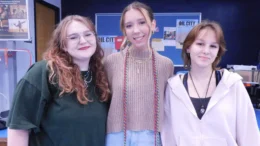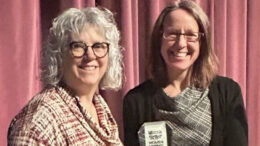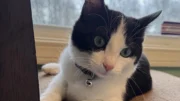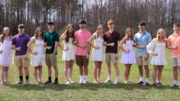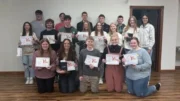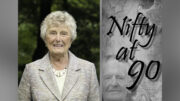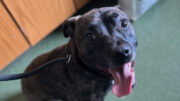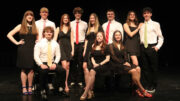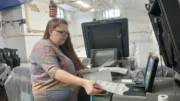In the face of ultimate desperation, hope can propel one to victory in “Rogue One: A Star Wars Story”, a prequel to “Star Wars: Episode IV – A New Hope.” Directed by Gareth Edwards, director of 2014’s “Godzilla,” the film stars Felicity Jones as a disgraced rebellion soldier who leads a battle to steal the plans to the Empire’s ultimate superweapon: The Death Star.
For Jyn Erso (Jones), life since her father Galen (Mads Mikkelsen) was abducted by the Empire has been plagued with tragedy. All that is about to change when rebellion leader Mon Mothma (Genevieve O’Reilly) informs her that new information has surfaced: Jyn’s father is helping the Empire build a weapon that can destroy an entire planet. But it seems her father engineered a small backdoor, and now Jyn must join the rebellion fighters, including Cassian Andor (Diego Luna) and reprogrammed droid K-2SO (Alan Tudyk), to steal the plans for the Death Star and deliver them to the rebels.
Taking place directly before the events of the original film, “Rogue One” does a nice job of both tying the events together, while tethering itself to the look and feel of the classic Star Wars films. This is an honest achievement when one considers that the film is not built upon the return of classic characters, but the continuing development of a story already known to many. And in this regard, Edwards’ direction has successfully opened a doorway that serves to flesh out new characters and visually expand the world.
It also appears the filmmakers were able to avoid a common criticism of prequels: It can be distracting when a prequel has more impressive technology than the film it technically precedes, and appears sharper, clearer, and more “realistic.” While this is a consequence of advances in filmmaking, “Rogue One” handles this in a seemingly unique way by gradually and subtly enhancing the film’s effects. During later sequences, the film’s effects gradually appear more vibrant and “plastic,” until they seem to resemble those of the original in tone and color.
This, of course, helps to near seamlessly merge the story of “Rogue One” with the beginning of “A New Hope,” and allows the audience to follow a band of new characters as they set out to influence an old adventure. And it is here that the film unfortunately begins to show its faults. The filmmakers have certainly tried to make these characters likable, but except for a character that isn’t even human, most of their development feels rushed.
While some character portrayals mesh nicely, at the same time they have a complicated aura, like they do not actually belong in this setting. This is not to suggest they are bad characters, more that they only part of the film, rather than standing on their own. The characters seem less memorable than the story, dazzling imagery, and the overall spectacle that dominates the screen.
“Rogue One: A Star Wars Story” from director Gareth Edwards is an exciting battle into the human side of the Star Wars universe. While some of the characters and parts of the story may not be on point, the film’s humor and style bleed Star Wars, dropping audiences into the front lines of the rebellion. Tethering itself to the origins of the franchise, this is an adventure that movie-goers, fans or not, are sure to enjoy.
My grade: 7 out of 10 stars.
(Timothy Hogg has a minor in film and media studies from Slippery Rock University. This is his final movie review for the paper.)



